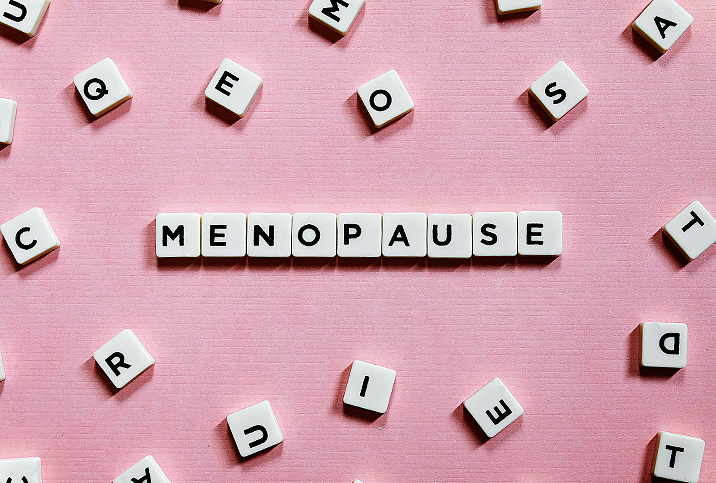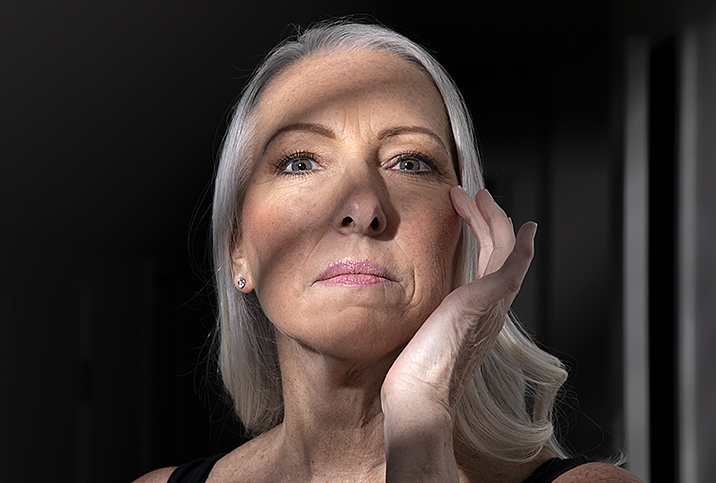What Causes Hot Flashes and How Do I Prevent Them?

If you're looking for how to prevent hot flashes, you're in the right place. Read on to find out what you can expect as you transition into menopause and the types of treatment available to help minimize your vasomotor symptoms of menopause (VMS).
What are the common symptoms of menopause?
Menopause is defined as the point at which a woman has not menstruated in 12 consecutive months, according to the North American Menopause Society (NAMS). The average age of menopause in the United States is 51.
For many women, however, the menopausal transition (also known as perimenopause) begins years ahead of time, with a variety of symptoms signaling its arrival.
Hot flashes can be a fleeting sense of warmth that is mildly disturbing or be very disruptive to work, sleep and quality of life.
These menopause symptoms include:
- Missing or irregular periods
- Vasomotor symptoms (hot flashes and night sweats)
- Vaginal dryness
- Sleep disturbances and insomnia
- Mood swings
This article will discuss the vasomotor symptoms of menopause you may experience and what treatment options are available for you.
What does a hot flash feel like?
The vasomotor symptoms of menopause are more commonly called hot flashes and night sweats. Night sweats are hot flashes that occur at night.
"Hot flashes can be quite variable," said Robin Noble, M.D., a board-certified gynecologist in Portland, Maine and chief medical officer of Let's Talk Menopause, a national nonprofit organization.
"For some, a fleeting sense of warmth that is mildly disturbing; for others, they can be very disruptive to work, sleep and quality of life," Noble continued. "They can be associated with sweats, facial flushing, heart palpitations, increased anxiety, as well as embarrassment."
Sometimes hot flashes are followed by chills, and night sweats can wake a person from sleep, which contributes to the sleep disturbances experienced during perimenopause.
Why are hot flashes worse at night?
Hormone levels fluctuate throughout the day and night. For some women, those fluctuations result in waking up drenched in sweat. Sugar, stress or caffeine could all be triggers, according to the Cleveland Clinic. Look at your diet and see if what you consume in the evening is triggering a night of hot flashes.
How common are hot flashes and night sweats?
"Hot flashes and night sweats are extremely common during the menopausal transition," said Michael Green, M.D., a board-certified OB-GYN in Lake Arrowhead, California, and chief medical officer of Winona, a menopause care and wellness center.
Up to 80 percent of women will experience vasomotor symptoms during the menopausal transition, according to the large, longitudinal Women's Health Study known as SWAN.
This study suggested that the "occurrence and frequency of VMS peak in the late perimenopause and early postmenopausal years, or the several years surrounding the final menstrual period." However, the research also found that for a "sizable minority" of women, hot flashes and night sweats can begin at an earlier age and last into their 60s and 70s.
"Hot flashes are tremendously variable. They can be mild to disruptive, and they can last for a few weeks or months to upwards of 15 years," Noble confirmed.
When your estrogen levels decrease in the menopause transition, the cells in your hypothalamus get triggered to tell your body it is hot, causing a hot flash or night sweat.
"Hot flashes can begin 10 years prior to an individual's final period. Some women begin to experience hot flashes even though their period is regular each month," added Barbra Hanna, D.O., a board-certified OB-GYN and NAMS-certified menopause specialist in Wheaton, Illinois, and founder of MyMenopauseRx, an online doctor's office devoted to menopause healthcare.
"Most women experience menopausal hot flashes for between six months and two years," Hanna said. "However, for some, the menopause transition can last up to 10 years. Unfortunately, for a small percentage of women, hot flashes never go away."
As for the frequency and intensity of hot flashes, Green said the typical duration can range from a few seconds to several minutes, with most lasting for about 4 minutes.
"Hot flashes can occur multiple times a day, and their frequency may increase as women progress through menopause," he said.
Hanna said there are no rules when it comes to hot flashes.
"Each individual's menopause experience is unique," she said.
What causes hot flashes?
"Vasomotor symptoms are triggered in a part of your brain called the hypothalamus—your temperature center," Hanna said. "When your estrogen levels decrease in the menopause transition, the cells in your hypothalamus get triggered to tell your body it is hot, causing a hot flash or night sweat to cool you down."
Hot flashes can be triggered by many things. Noble, Hanna and Green said common triggers include:
- Hot beverages
- Hot weather or heat
- Tight clothing
- Smoking
- Alcohol
- Caffeine
- Spicy foods
- Stress
- Walking up a flight of stairs
- Walking into a warmer room
Increased awareness of your hot flash triggers can help you manage them, Noble said.
How to treat hot flashes and night sweats
"Individuals have two options when looking to treat their hot flashes and night sweats: non-prescription treatment and prescription treatment," Hanna said.
Prescription treatment options
"Hormone therapy is the most effective treatment for vasomotor symptoms, hot flashes and night sweats, according to the North American Menopause Society," Hanna said. Hormone replacement therapy, or HRT, is an effective option for many women trying to manage hot flashes, but it isn't for everyone.
"Some individuals find antidepressants can decrease vasomotor symptoms," she said. Selective serotonin reuptake inhibitors (SSRIs) may help prevent hot flashes or reduce their severity in some women.
Additionally, in May 2023, the U.S. Food and Drug Administration (FDA) announced the approval of a new drug to treat hot flashes. It is an oral medication called Veozah (fezolinetant). It works by binding to and blocking a receptor in the brain that plays a role in regulating body temperature, according to the FDA's press release.
Non-prescription treatment options
There are a variety of non-prescriptions treatment options that are effective for some women, including cognitive behavior therapy with a therapist and lifestyle changes.
"Some women report they have found relief using black cohosh and evening primrose oil but there are no strong scientific studies that support their use," Hanna explained. Before you start any supplements, it's important to talk to your doctor about proper dosage, side effects and any possible interactions with the medications you are currently taking.
Another study, published in 2021, suggested switching to a plant-based vegan diet, with the addition of soy. Study participants experienced significant decreases in the frequency of hot flashes and improvements in other menopausal symptoms.
Another study indicated the effectiveness of hypnotherapy as a non hormonal way to reduce hot flashes. The 2013 study suggested that hypnosis may reduce hot flashes by 70 to 80 percent with daily practice.
Lifestyle changes you might try, according to Hanna and Noble, include:
- Dressing in layers
- Using a fan
- Dropping the temperature
- Daily exercise
- A plant-based or green Mediterranean diet
- Avoiding alcohol
- Using a cool silk pillow or pajamas
The bottom line
Lifestyle changes should be your first line of defense against hot flashes and night sweats, according to the National Institute on Aging. However, if you are in the menopausal transition or postmenopausal and hot flashes are disrupting your life, talk to your doctor about the various treatment options available.


















